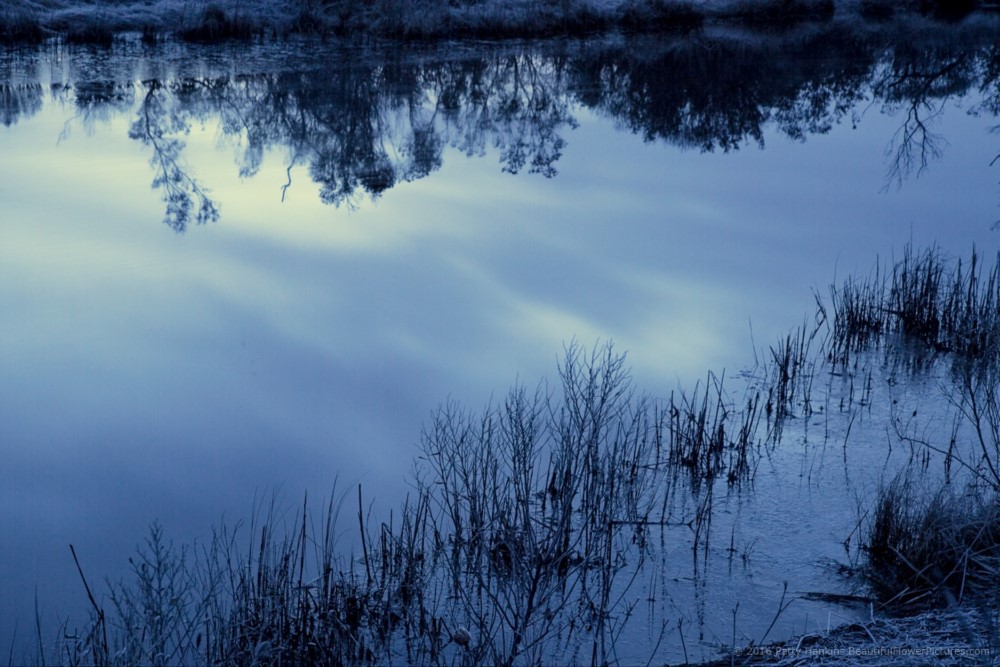
by hankinslawrenceimages | Jun 19, 2016 | New Photos, Virginia

Chincoteague Sunrise Reflections © 2016 Patty Hankins
I’ve recently added a new photo – Chincoteague Sunrise Reflections – to the shop on my BeautifulFlowerPictures.com website.
I love visiting Chincoteague National Wildlife Refuge and the Assateague National Seashore – especially during the winter. I’ve photographed sunrise from several different locations in the parks. In 2016, I had to find a new spot to photograph sunrise since the beach was being rebuilt after the winter storms. I ended up photographing in one of the channels alongside the road. What caught my eye was how the blue sky and white clouds looked on the water and ice in the channel. I included the relections of the plants along the shore to give a sense of place to the photo.
Chincoteague Sunrise Reflections is available as a matted print on my website.

by hankinslawrenceimages | Sep 18, 2015 | Photo Tips
One of the best things about being a photographer is that I get to spend time in nature in beautiful places. I get to see and photograph sunrises and sunsets, mountain views, running water and all sorts of flowers. People always say – you’re so lucky you get to see these sights – and I am. But what many people don’t realize is how much work goes into making sure I’m in the right spot at the right time to capture the photographs that I do.
After I shared my article last month on planning a photo trip (a friend asked how do I specifically plan a sunrise shoot – espeically if it’s somewhere you haven’t been before. After thinking about it – I came up with my Five Tips for Planning a Sunrise Shoot.

First thing I do when I’m planning on photographing a sunrise is to see what information I can find on the web about the location I’m going to be visiting. So I’ll do a quick check on google for “photography guide” and the location. I’ll also check Google Images and Pinterest for “sunrise” and the location. This usually gives me a good idea on what other photographers have found to photograph there – and what sorts of spots I should be looking for.
The next thing I do is figure out exactly when and where the sun will be coming up. There are any number of great apps available to help photographers plan their shoots. Photopills and the Photographers Ephemeris provide very detailed information about when/where you can find the sun, and the moon for almost every location on the planet. Here’s the information from The Photographer’s Ephemeris for one of the locations I’m looking at for next week – Edisto Island, South Carolina. Sunrise will be at 7:08 AM and it will be coming up at 88.6°. I’ll actually want to get there about 30-45 minutes before sunrise – so I can capture the soft dawn light.
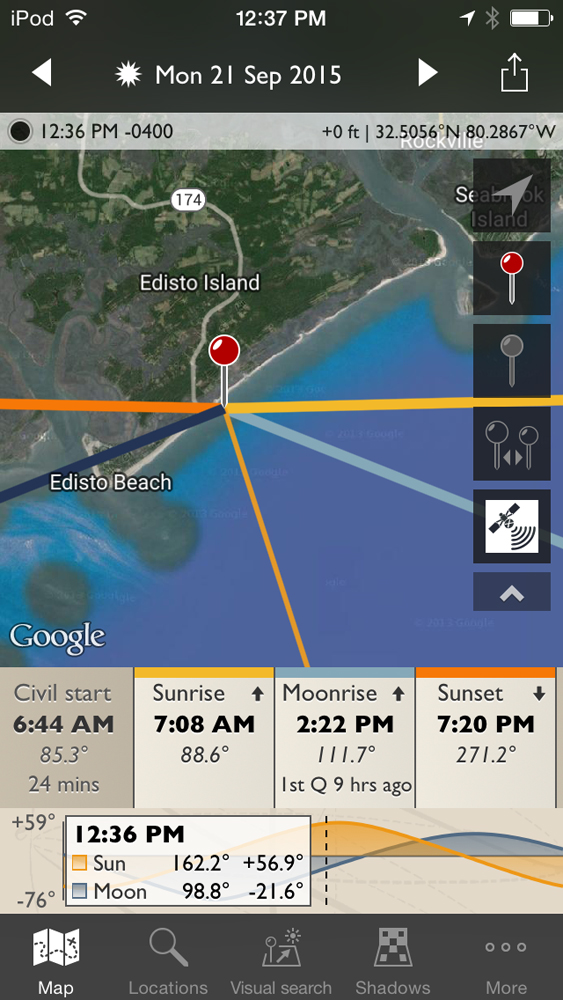
Scouting the location in person before the day I’m planning on photographing sunrise is probably the most important action I take. I’ll drive out to the location and start walking around – looking for interesting objects to put in my photograph such as driftwood on a beach or a stand of trees I’m like to include in my photo. I’ll pull out my compass and see where these objects are in relation to where the sun is coming up. And then once I’ve found a location (or even better – two locations) I’ll mark them in my GPS so I can find that same spot in the dark.
On my spring trip to South Carolina I planned on photographing a sunrise from Hunting Island State Park. From everything I’d seen – some of the best locations were at the southern end of the park. When I went out scouting – I discovered that my prefered locations were about a mile down a trail from a parking lot. Since I was going to be out alone – I knew I needed an alternate location. The combination a mile-long dark trail with tree roots and rocks to walk around – and me carrying a backpack full of camera gear and my tripod is a recipe for disaster. Chances are I’d end up tripping over a tree root in the dark and end up in an ER rather than photographing sunrise.
So I kept looking – and found a small beach with some downed trees and driftwood – just north of the lighthouse. The spot was not far from the parking lot – with a clear path down to the beach. This is one of the photos I took that morning.
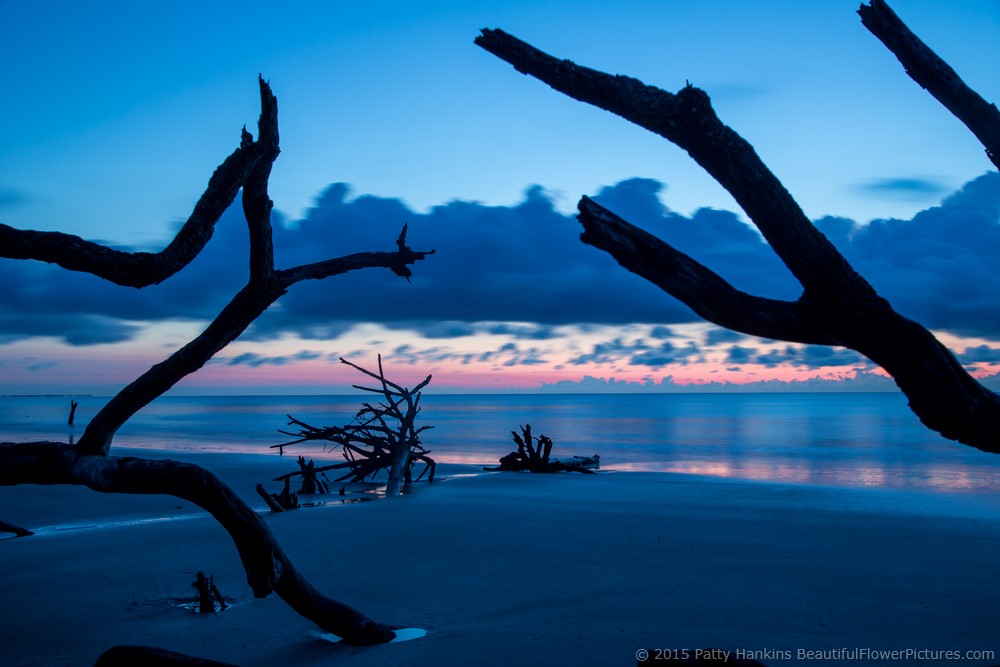
Sunrise at Hunting Island State Park © 2015 Patty Hankins
When I’m out scouting, I not only look for the spot I’m going to be photographing the sunrise, I also look for a nearby location where I can take advantage of the golden morning light. Once the sun has crossed the horizon – often the best light is 180° away from the sun. Here’s one of the photos I took at Assateague National Seashore in February after photographing the sun coming up over the Atlantic Ocean.
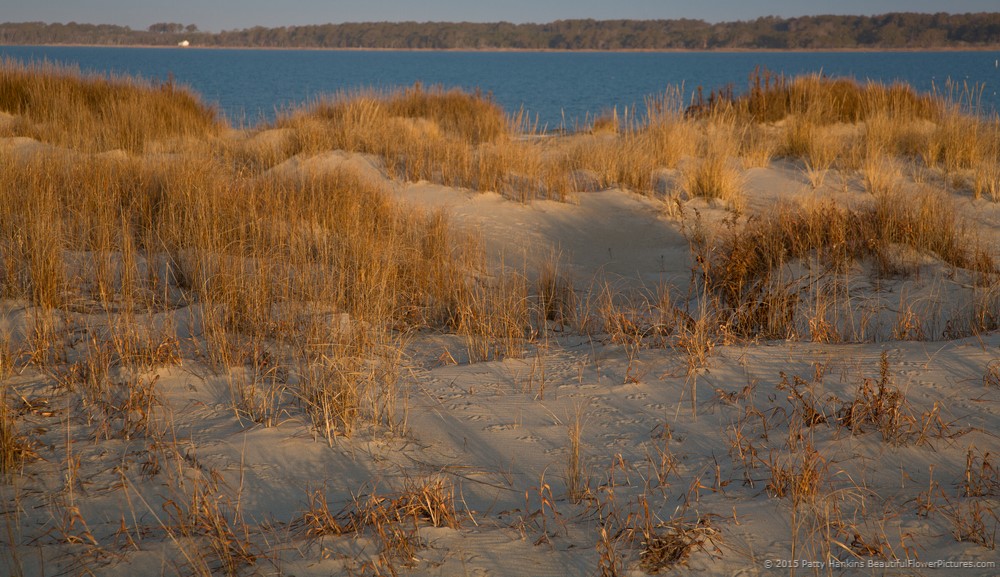
Morning Light on the Dunes at Assateague National Seashore © 2015 Patty Hankins
Once I’m back home or at my hotel, I make sure to get all my gear together and in one place so I can grab it and head out the door rather than having to look all over the place for it early in the morning. I make sure I have fully charged batteries and extra SD cards. I’ll set my camera to the settings I usually use for sunrise – aperture priority, ISO 100 and f11. I check to make sure my tripod plate is securely attached and that everything is working on my tripod. I’ll also attach a small flashlight to my pack so I can find it in the dark.
Finally, I do one last check of predicted conditions to make sure I’m as prepared as I can be. I check the weather forecast for the location I’m photographing (rather than where I am) especially if I’m planning on photographing from a higher location than where my hotel is. I only had to photograph sunrise once from Clingman’s Dome in the smokies in a tshirt in 45° temperatures before I learned that lesson. It was at least 20 degrees warmer in town so I didn’t bother to toss a jacket in the care. In addition to the weather forecast, I check the cloud cover forecast. I use the iCSC: Clear Sky Chart Viewer to see what the cloud cover is likely to be. Sky charts are designed to help astronomers figure out what they are likely to be able to see through their telescopes. Photographers use them to get an idea of likely cloud cover for various shoots. Here’s what the cloud cover was predicted to be earlier this week at Edisto Beach.
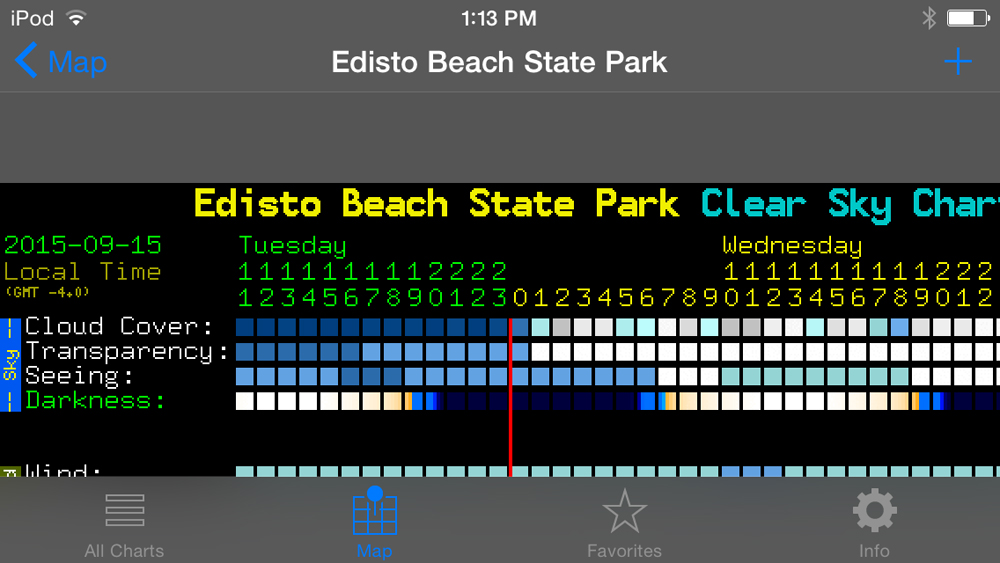
With a little planning, it’s much easier to be in the right place at the right time to photograph sunrise. Then all you need is a little cooperation from Mother Nature and you’ll have wonderful sunrise photographs to share with your friends and family.

by hankinslawrenceimages | Sep 4, 2015 | Photo Locations, South Carolina
While I was in the South Carolina last spring I wanted to photograph a sunrise at one of the boneyard beaches in the area. Up and down the East Coast you can find beaches with remains of driftwood trees along the water’s edge. In some cases, the trees have fallen over exposing the roots to the elements. In other cases, parts of the trees are still standing in the water or on the shore. These beaches have come to be known as boneyards.
I did get to Hunting Island State Park outside of Bluffton for sunrise one morning. It was one of those morning with enough cloud cover that it was possible I was going to see an incredible sunrise – or it was going to be one of those mornings where not much happened. As it turned out – early on I saw some wonderful shades of blue, with a bit of pink and purple. Then the cloud layer thickened and the color washed out above them.
Here are some of my photos of the driftwood along the beach

Sunrise at Hunting Island State Park © 2015 Patty Hankins
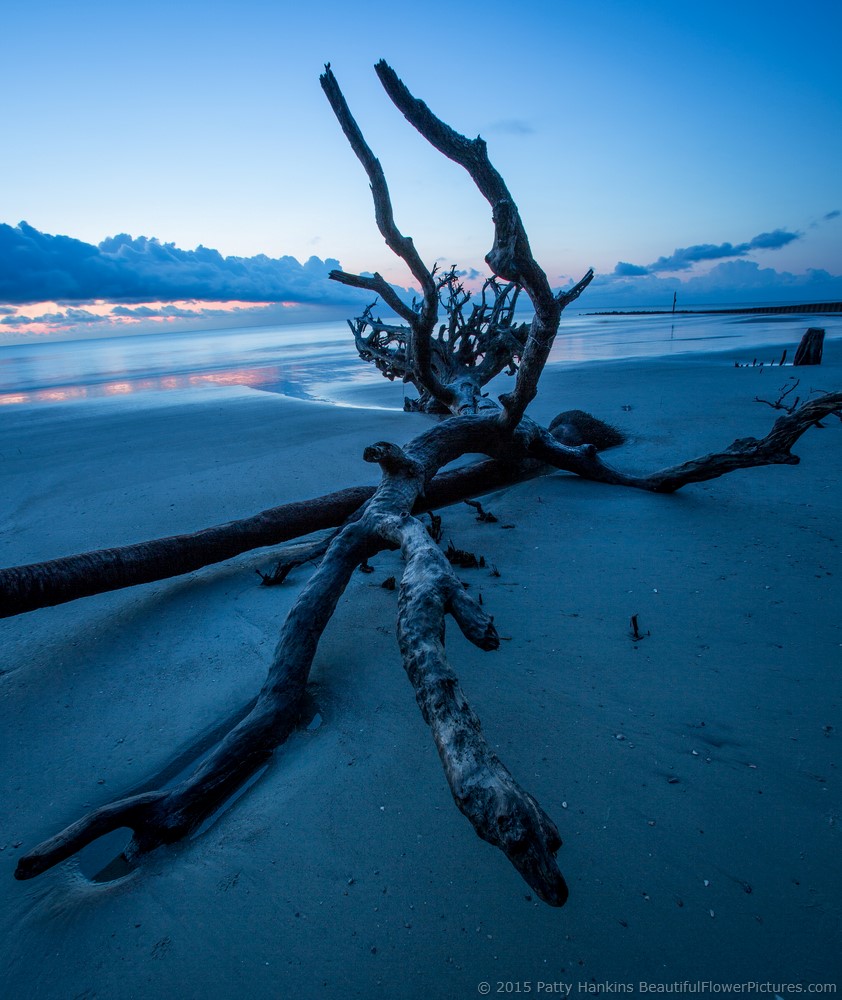
Sunrise at Hunting Island State Park © 2015 Patty Hankins
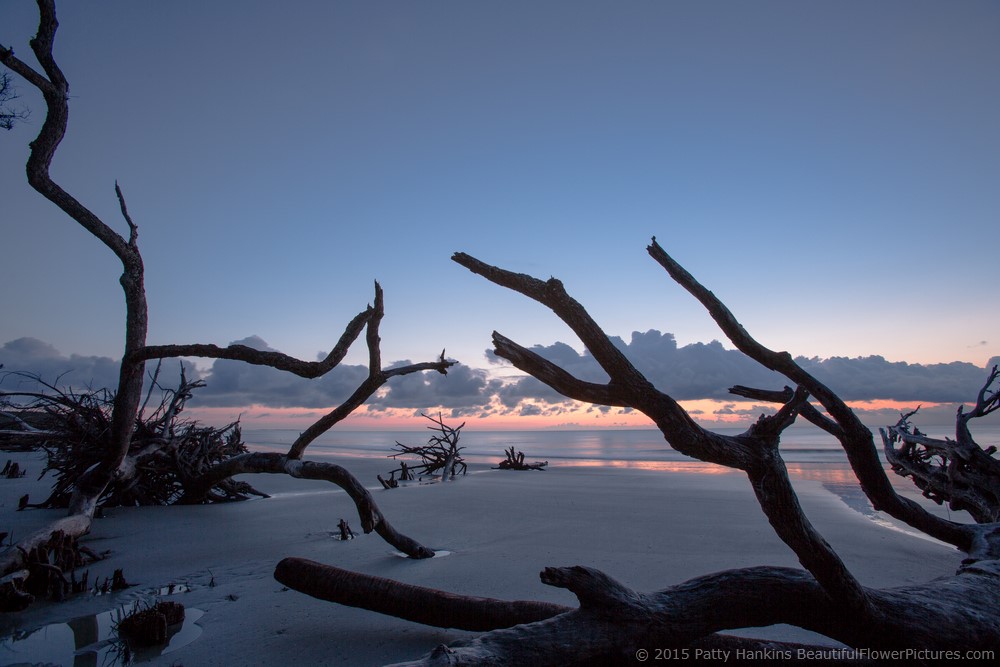
Sunrise at Hunting Island State Park © 2015 Patty Hankins
As I lost the good light over the driftwood, I walked over to a nearby beach to catch the color reflecting in the sand as the tide went out
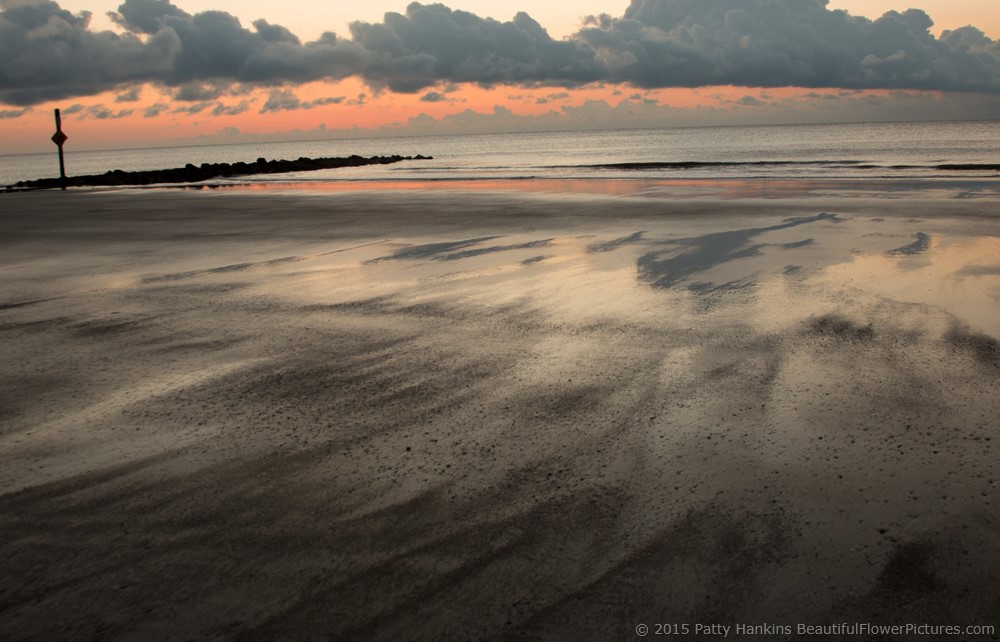
Sunrise at Hunting Island State Park © 2015 Patty Hankins
And then just as the sun came up – it brightened up the clouds
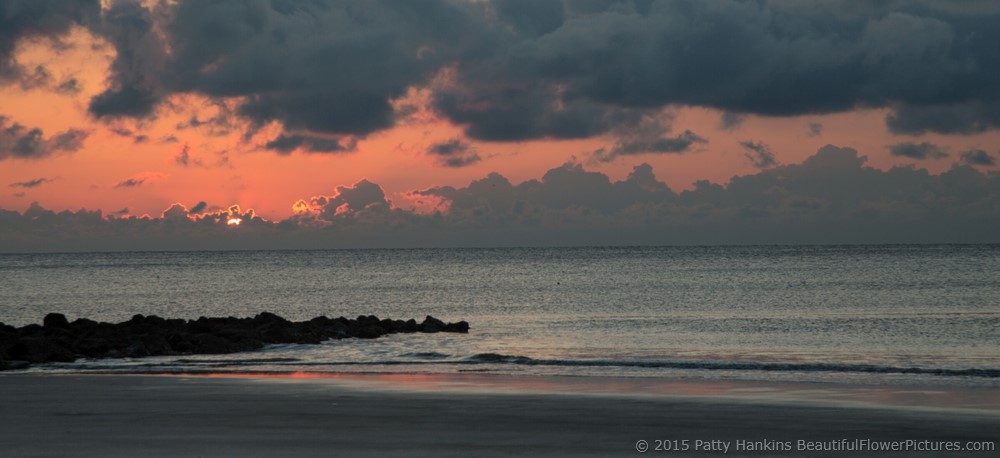
Sunrise at Hunting Island State Park © 2015 Patty Hankins
I’m heading back to South Carolina in a couple of weeks – one of the things I’m hoping to do is photograph another sunrise or two at one of the boneyard beaches. I”m hoping I get photos that better convey the magic of the driftwood on the beach than this set does
by hankinslawrenceimages | Oct 17, 2011 | Flowers, Wildflowers
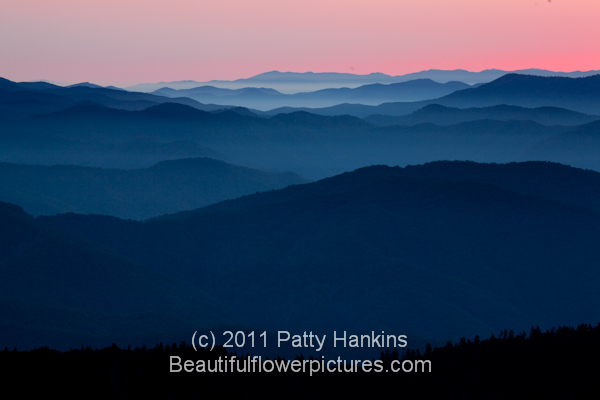 Sunrise at Clingman’s Dome, Great Smoky Mountains National Park © 2011 Patty Hankins
Sunrise at Clingman’s Dome, Great Smoky Mountains National Park © 2011 Patty Hankins
I spent an amazing five days photographing in the mountains of Tennessee last month. While I have visited and photographed in the Smoky Mountains several times in the past few years, this was my first late summer visit. What I discovered was incredible sunrises after 7 AM, peaceful streams, different wildflowers than I’ve seen in the past, and no crowds. The Great Smoky Mountains National Park is the most visited park in the National Park System, so finding a time of year when it isn’t very crowded was wonderful!
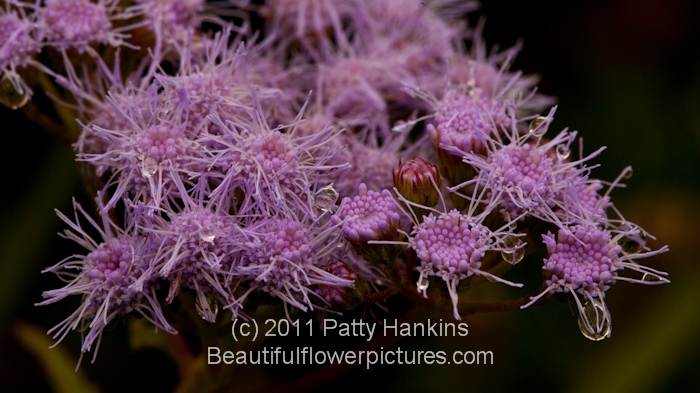
Mistflower © 2011 Patty Hankins
Since the park was so quiet, I was able to sit by a stream for an hour – just reading a book and relaxing. Another day, I spent a couple of hours in just one corner of a field at Cades Cove – photographing wildflowers and watching the deer across the road.
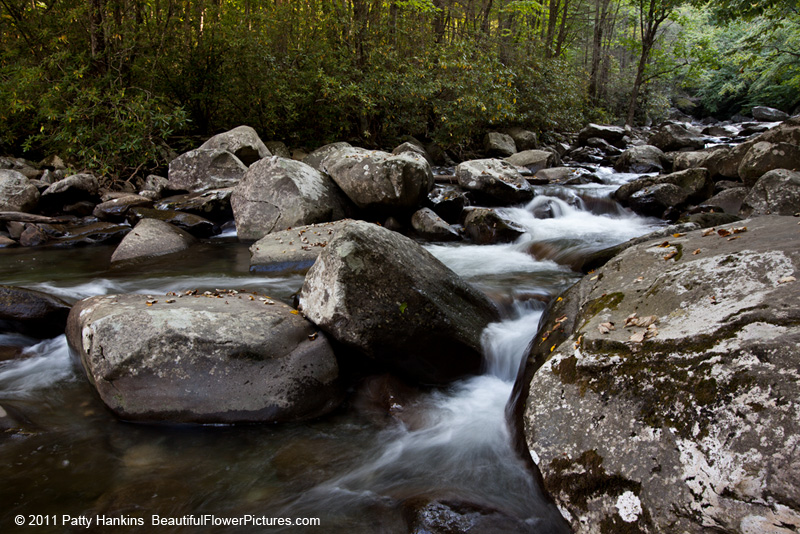 Little Pigeon River, Great Smoky Mountains National Park © 2011 Patty Hankins
Little Pigeon River, Great Smoky Mountains National Park © 2011 Patty Hankins
In addition to my time in the National Park, I spent a day exploring the Cherokee National Forest with a friend. We drove for hours on the forest roads, stopping to photograph when something caught our eye. It was one of the best days I’ve had photographing in a very long time.
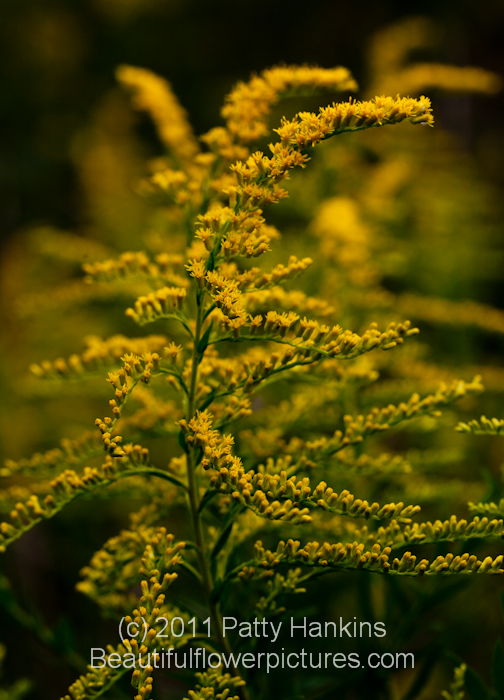 Canada Goldenrod © 2011 Patty Hankins
Canada Goldenrod © 2011 Patty Hankins
What I realized on this trip is how important it is to just slow down and enjoy where I found myself. Usually when I’m on a photo trip I’m in a hurry because I don’t want to miss anything – wondering what if an unknown wildflower is just around the bend. I had a wonderful time – I may have missed seeing a few things because of the slower pace of this trip. But that’s OK – because I thoroughly enjoyed seeing what was around me.
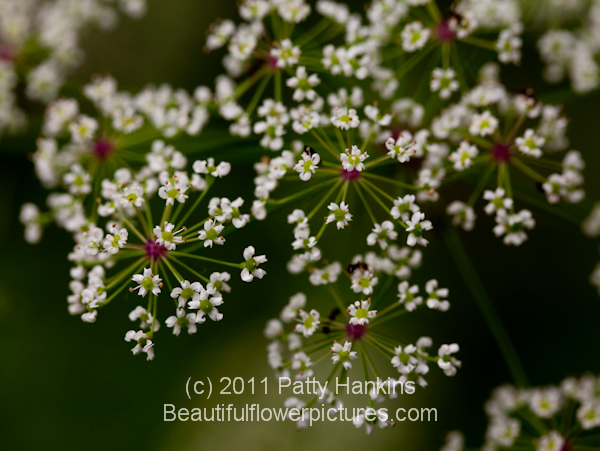 Hemlock © 2011 Patty Hankins
Hemlock © 2011 Patty Hankins
Next time you head out into nature – whether it’s somewhere familiar – or somewhere new – how about trying what I discovered this trip. Slowing down and completely experiencing where you are and what you are seeing can be incredible.
by hankinslawrenceimages | Feb 25, 2010 | Photo Locations
Last Sunday morning I spent another magical morning at the Savannah National Wildlife Refuge. I was in the area for the Springtime Made in the South show, and since the show didn’t open until 11 on Sunday morning – I had time to head out for sunrise.
I’m really glad I went out to the refuge, the sunrise was spectacular. There was a lot of fog and mist in the marsh, and some clouds in the sky. All of these combined to create wonderful colors and patterns in the marsh.
I spent the time before the sun rose, and just after it crossed the horizon photographing some of the marsh grasses near the entrance to the refuge. The colors were incredible lots of soft pinks and purples that turned to orange once the sun rose. Here are a couple of my photos of the marsh grasses.

(c) 2010 Patty Hankins

(c) 2010 Patty Hankins
Since the Savannah National Wildlife Refuge is known for the quantity and variety of bird that winter at the refuge, I did take a few photos of the cormorants near the entrance. Here’s what I saw when I first arrived at the refuge – a tree with many cormorants in the branches. As the sunrise progressed, most of the birds woke up and flew off into the marsh.
 (c) 2010 Patty Hankins
(c) 2010 Patty Hankins
After most of the birds flew off, I noticed a couple of birds were still perched on the branch at the far right of the photo. In the distance, I could see the silhouettes of some of the trees with the wonderful draping of the spanish moss. From where I was standing, it looked the birds were admiring the wonderful colors of the sunrise. I just had to take a photo of the birds enjoying the sunrise.
 (c) 2010 Patty Hankins
(c) 2010 Patty Hankins
Once the sun was up, I headed further into the refuge. I was hoping to photograph more of the Spanish Moss in the filtered light that I had seen earlier in the week. But along the way, I spotted some cattails in some wonderful golden light that I just had to stop and photograph. At this time of year, the heads of the cattails are full of fluffy seeds. The sunlight seemed to create halos around the cattails.

(c) 2010 Patty Hankins
 (c) 2010 Patty Hankins
(c) 2010 Patty Hankins
I wasn’t the only photographer from the show out photographing in the marsh that morning. Dan Williams was also photographing at Savannah NWR. His The Magic of Light post describes his experiences at the marsh. Be sure to double click on Dan’s photos in the post to see the larger versions of the photos.























